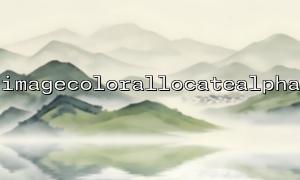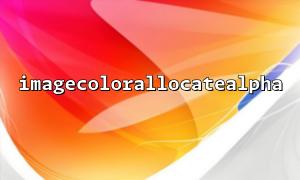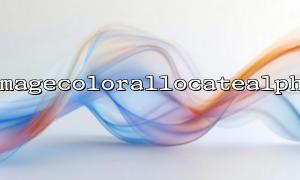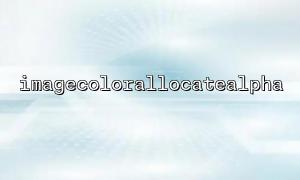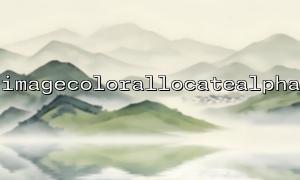In PHP, the GD library provides many image processing capabilities, including drawing shapes and managing transparency. Using the imagecolorallocatealpha() and imagefilledrectangle() functions, we can easily create rectangles with transparent areas. Below are the detailed steps to accomplish this.
imagecolorallocatealpha() is used to allocate a color with an alpha (transparency) channel. The function syntax is as follows:
int imagecolorallocatealpha(resource $image, int $red, int $green, int $blue, int $alpha);
$image: The target image resource.
$red, $green, $blue: The red, green, and blue color values, ranging from 0 to 255.
$alpha: The transparency level, where 0 is completely opaque and 127 is fully transparent.
This function allows us to create colors with transparency, which can then be applied when drawing rectangles or other shapes.
imagefilledrectangle() is used to draw a filled rectangle on an image. Its syntax is:
bool imagefilledrectangle(resource $image, int $x1, int $y1, int $x2, int $y2, int $color);
$image: The image resource.
$x1, $y1, $x2, $y2: The coordinates of the rectangle’s top-left and bottom-right corners.
$color: The fill color for the rectangle, typically created by imagecolorallocatealpha() or imagecolorallocate().
We can combine imagecolorallocatealpha() and imagefilledrectangle() to create a rectangle with transparent sections. Below is a complete example demonstrating how to draw a rectangle with a transparent background on an image.
<?php
// Create a 500x500 pixel image
$image = imagecreatetruecolor(500, 500);
<p>// Set a transparent background<br>
$transparent = imagecolorallocatealpha($image, 255, 255, 255, 127); // Fully transparent<br>
imagefill($image, 0, 0, $transparent);</p>
<p>// Set a color with transparency (for example, a semi-transparent red)<br>
$color = imagecolorallocatealpha($image, 255, 0, 0, 50); // Semi-transparent red</p>
<p>// Draw a filled rectangle with the transparent color<br>
imagefilledrectangle($image, 50, 50, 450, 450, $color);</p>
<p>// Output the image and free resources<br>
header('Content-Type: image/png');<br>
imagepng($image);<br>
imagedestroy($image);<br>
?><br>
imagecreatetruecolor(): Creates a 500x500 pixel image.
imagecolorallocatealpha(): Creates a transparent color $transparent for the background, then uses imagefill() to fill the background with transparency.
imagecolorallocatealpha(): Creates a semi-transparent red color with an alpha value of 50.
imagefilledrectangle(): Fills a rectangle from (50, 50) to (450, 450) using the semi-transparent red color.
header('Content-Type: image/png'): Sets the content type to PNG so the browser correctly displays the image.
imagepng(): Outputs the image.
imagedestroy(): Frees the image resource.
The above code generates a 500x500 pixel image with a transparent background and draws a semi-transparent red rectangle on top. You can adjust the rectangle’s position, size, and transparency as needed.
Using this method, you can apply transparent colors within images to create various shapes or areas with transparency. Controlling transparency makes images more flexible, ideal for image composition, dynamic watermark generation, and more.
